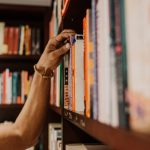Literacy is often thought of as the ability to read and write, but its true essence extends far beyond the written word. In today’s interconnected world, literacy encompasses a diverse range of skills that help us navigate complex social, cultural, and technological landscapes. This article delves into the broader spectrum of literacy skills, emphasizing the importance of visual, digital, emotional, and cultural literacy. By exploring these various dimensions, we can enrich our understanding of literature and its role in our lives.
Understanding the Broader Spectrum of Literacy Skills
When we think about literacy, we often focus on the fundamentals—reading and writing. However, literacy is a multifaceted concept that includes critical thinking, analytical abilities, and the capacity to interpret various forms of information. For instance, being literate means understanding context, recognizing bias, and evaluating sources critically. These skills are essential for engaging with literature and the world around us, allowing readers to discern deeper meanings and themes in texts.
Moreover, literacy involves the ability to communicate effectively across different mediums. Whether through spoken language, visual imagery, or digital platforms, the manner in which we express ourselves and interact with others is a significant component of being literate. Cultivating these skills can enhance our appreciation of literature, as we learn to appreciate not just the words on the page, but also the subtleties of how those words are conveyed.
Finally, the broader spectrum of literacy encourages us to engage with diverse perspectives. Literature from various cultures and backgrounds enriches our understanding and fosters empathy. By exploring texts that challenge our viewpoints, we develop a more nuanced understanding of the human experience, ultimately becoming more informed and compassionate individuals.
The Importance of Visual Literacy in Today’s World
In an age dominated by images, understanding visual literacy has never been more crucial. Visual literacy refers to the ability to interpret, create, and communicate through visual means, including photographs, videos, infographics, and even social media posts. As readers, embracing visual literacy allows us to engage with literature in innovative ways, such as analyzing graphic novels or exploring illustrated editions of classic texts.
Visual literacy also plays a vital role in how we consume media. The rapid proliferation of visual content makes it essential for readers to discern between authentic and manipulated images. As we encounter literature that incorporates visual elements, we can enhance our understanding by critically examining the interplay between text and visuals. This skill not only enriches our reading experiences but also equips us to navigate a world where images often speak louder than words.
To cultivate visual literacy, consider integrating books that combine text and imagery into your reading list. Graphic novels, picture books, and illustrated editions can provide a fresh perspective on familiar stories. Additionally, taking the time to analyze the visuals in these works will deepen your appreciation for the craft of storytelling, making your reading journey all the more rewarding.
Navigating Digital Literacy in a Tech-Driven Era
As technology continues to evolve, digital literacy has emerged as a fundamental skill set. This involves not just the ability to use digital tools but also the capacity to critically evaluate online information. In an era of misinformation, being digitally literate empowers readers to discern credible sources from unreliable ones, ensuring that they engage with literature and information responsibly.
Digital literacy also encompasses the skills needed to create and share content effectively. Blogging, social media, and self-publishing are just a few avenues for readers and writers to express themselves in the digital realm. Engaging with these platforms can lead to new literary experiences, as you connect with fellow enthusiasts and discover a wealth of diverse voices and perspectives.
To enhance your digital literacy, seek out online writing communities or platforms dedicated to book discussions. Participate in forums or social media groups where you can share insights about your favorite reads. As you navigate these digital spaces, be mindful of how to evaluate information and engage constructively with others, ultimately enriching your literary journey.
Cultivating Emotional and Cultural Literacy Through Reading
Reading is a powerful vehicle for cultivating emotional and cultural literacy. Emotional literacy, the ability to understand and express one’s emotions, can be greatly enhanced through literature. By immersing ourselves in the minds and experiences of characters, we gain insight into our own feelings and those of others. This empathetic engagement fosters deeper connections with both the text and the world around us.
Cultural literacy, on the other hand, allows us to appreciate the rich tapestry of human experiences. Engaging with literature from different cultures broadens our horizons and challenges our perspectives. Whether it’s through novels, poetry, or memoirs, exploring diverse narratives helps us understand the complexities of identity, tradition, and social dynamics, all of which are essential in today’s globalized society.
To cultivate both emotional and cultural literacy, consider exploring literature that challenges your worldview. Seek out authors from different backgrounds and genres, and reflect on how their stories resonate with your own experiences. Engage in discussions with fellow readers to share insights and interpretations, enriching your understanding and appreciation of the diverse human experience encapsulated in literature.
Literacy is a rich and evolving concept that goes beyond the traditional confines of reading and writing. By embracing visual, digital, emotional, and cultural literacy, we can deepen our engagement with literature and enhance our understanding of the world. As book enthusiasts and lifelong learners, let us explore these dimensions together, discovering new titles and perspectives that challenge us and expand our literary horizons. So, grab a book, open your mind, and let the journey of literacy continue!










